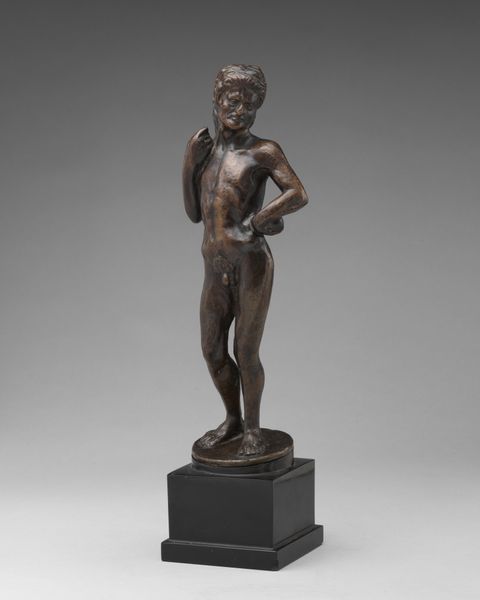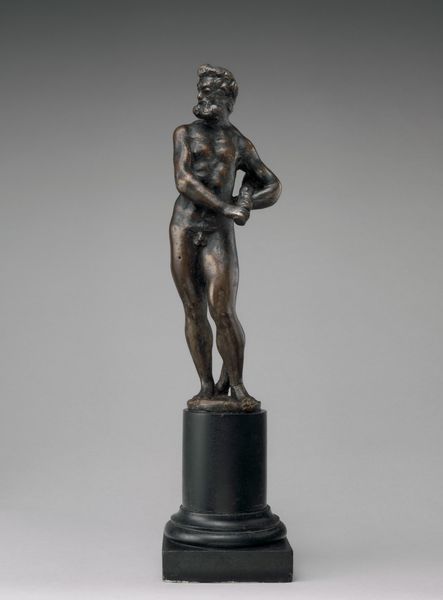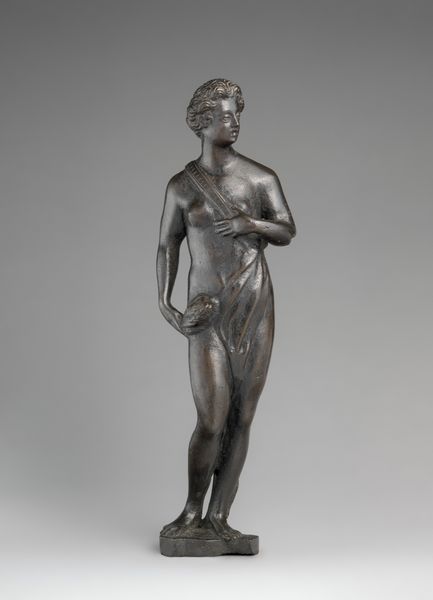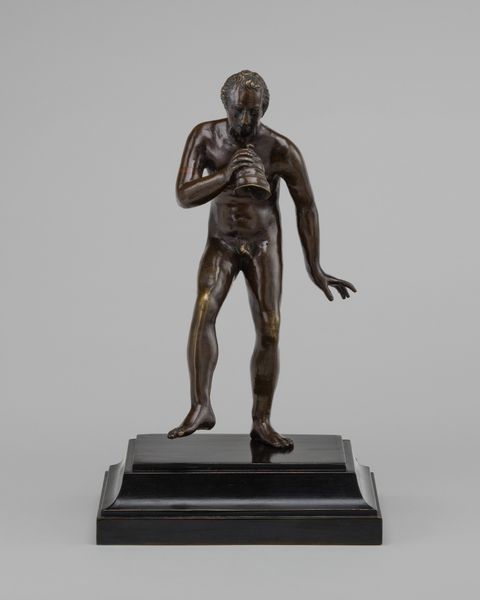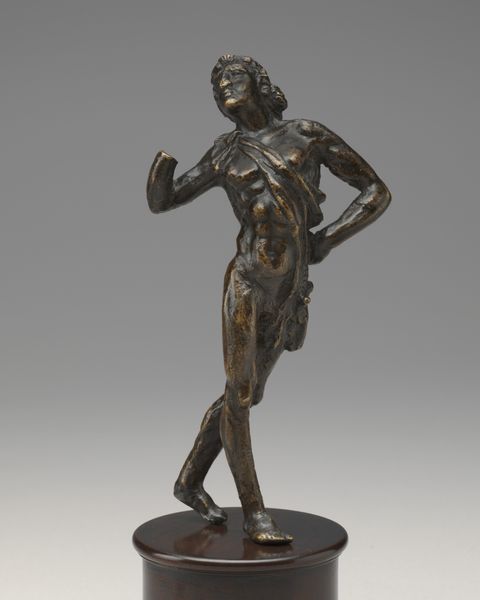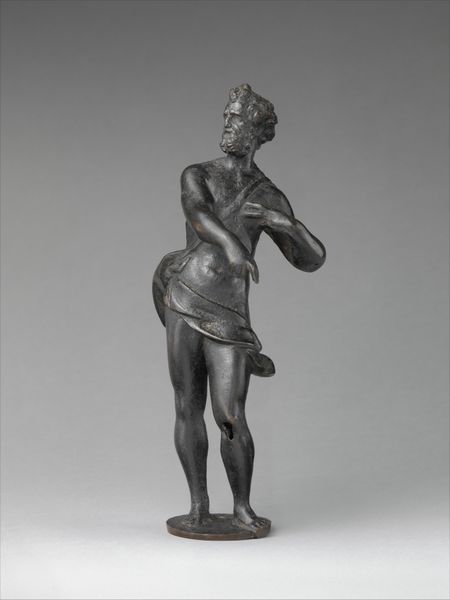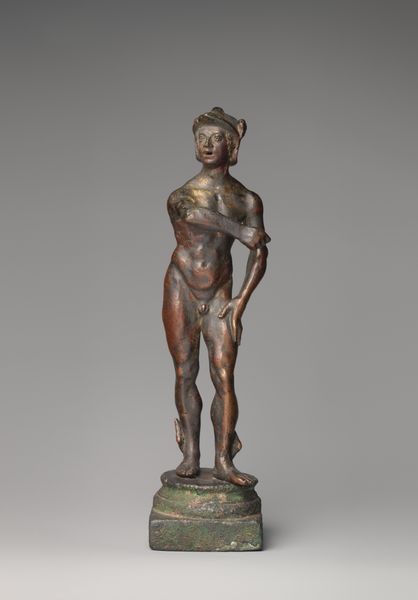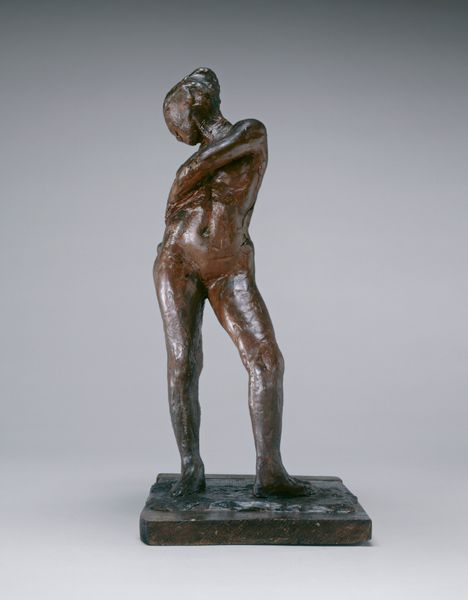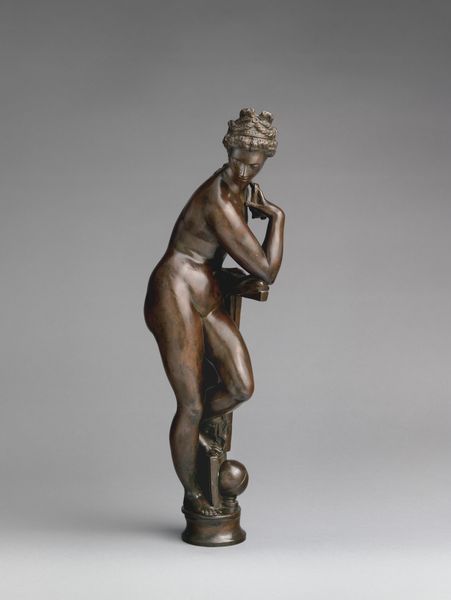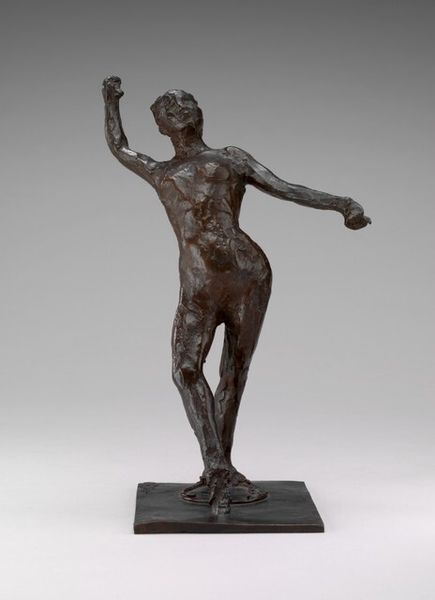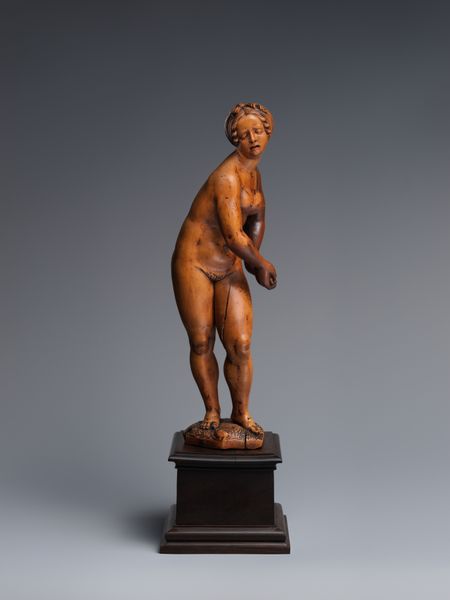
bronze, sculpture
#
portrait
#
bronze
#
figuration
#
11_renaissance
#
sculpture
#
italian-renaissance
Dimensions: overall: 16.4 x 5.5 x 4.8 cm (6 7/16 x 2 3/16 x 1 7/8 in.)
Copyright: National Gallery of Art: CC0 1.0
This bronze statuette of Pomona was created by Andrea Briosco, called Riccio, in the 16th century. Bronze is an alloy of copper and tin, and it was prized by Renaissance artists for its capacity to capture fine detail. Riccio employed the lost-wax casting technique, an intricate process. First, a wax model was created, then encased in clay, and fired in a kiln. The wax melts away, leaving a mold into which molten bronze is poured. Once cooled, the mold is broken to reveal the sculpture, which is then refined through chasing and polishing. The goddess Pomona carries symbols of abundance, and this work embodies the humanist fascination with classical antiquity. But it also demonstrates the expertise of the Renaissance bronze workshops. They were sophisticated operations, relying on division of labor and specialized skills – a far cry from our conventional ideas of the solitary artist. Appreciating this history of making helps us to move beyond the traditional hierarchy of art and craft.
Comments
No comments
Be the first to comment and join the conversation on the ultimate creative platform.
